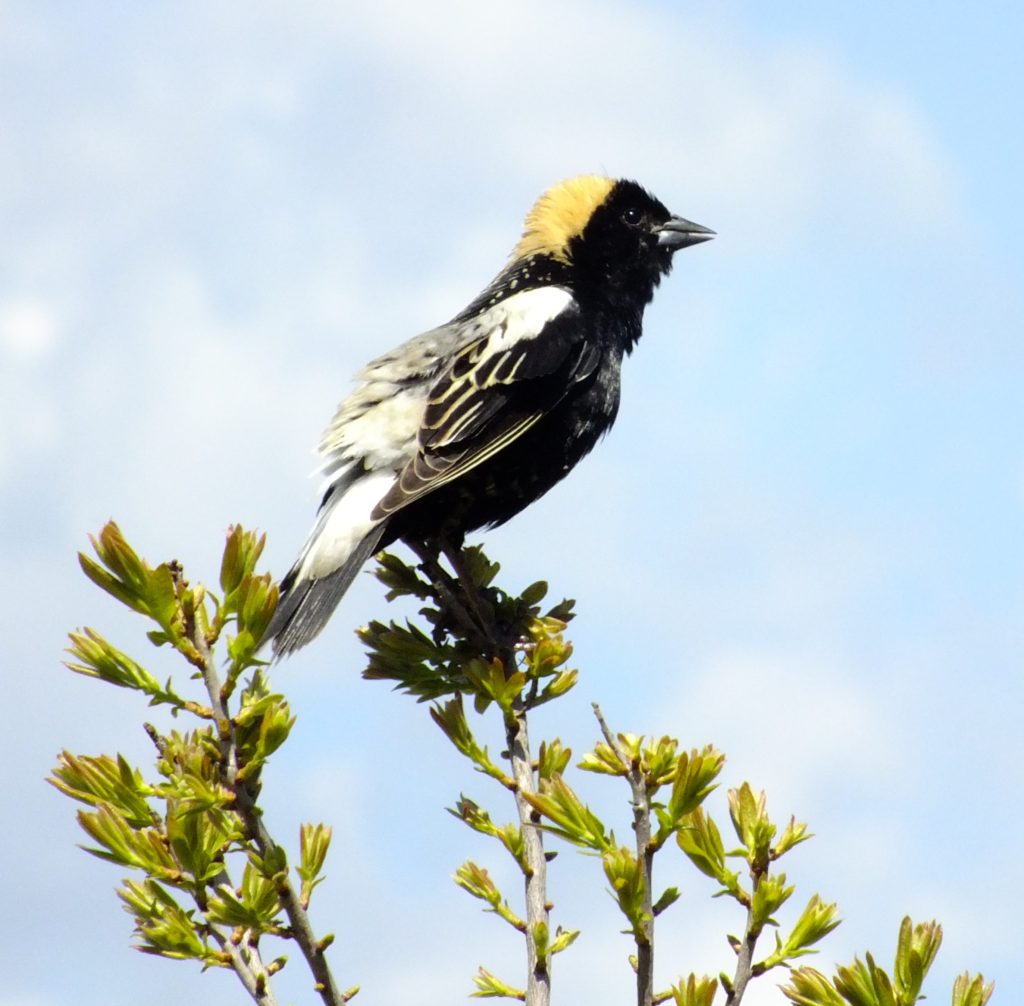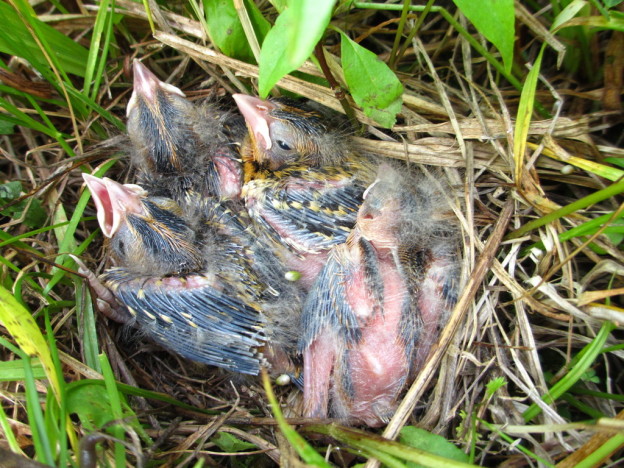By The Numbers: The 2018 Bobolink Project
We’re tallying up the results of this year’s Bobolink Project, and the numbers look great! The Project protected 932 acres of nesting habitat, up from 512 acres in 2016 (which was the project’s first year at Mass Audubon). Field surveys showed 368 pairs of Bobolinks on participating farmers’ land. Since Bobolinks fledge an average of 2.79 chicks every season, this translates to saving an estimated 1,027 Bobolinks—many of which may return to nest again next year!

It takes just 12 days for nestlings to leave the nest, but another two to three weeks before they can fly well enough to escape the mowers used for haying. Photo by S. Bardella
How it Works
Bobolinks rely on grasslands to breed, and often find that hayfields work just as well. Until the mid-20th century, many hayfields were mowed in late summer, weeks after Bobolink chicks had left the nest. Now, high demand for livestock feed means that farmers are mowing earlier and earlier; early-cut hay is richer in protein and more valuable. Sadly, this means that many Bobolink nestlings end up under the mower.
Every year, Mass Audubon offers farmers compensation for waiting to mow their hayfields until after nesting season. This model has so far proved effective: plenty of farmers would rather not mow over active bird nests, but need their hayfields to produce some source of income. Mass Audubon uses donations to cover these farmers’ losses from delaying mowing, keeping their farms economically viable while protecting grassland birds.

Photo by Martha Akey
Next Year’s Goals
Even with increased donations, the number of interested farmers is outpacing available funds. This year, we had enough funds to protect two thirds of project applicants’ land. We also had to leave an additional 492 acres of Bobolink habitat on the table. Sadly, this funding gap meant that most fledglings on the unprotected acreage didn’t make it.
While it may not be possible to prevent every single agriculture-related Bobolink death across the region, it is painful to have to turn away farmers who want to partner with us to protect birds.
If you’d like to help us protect even more acres and Bobolinks next year, please donate here!


